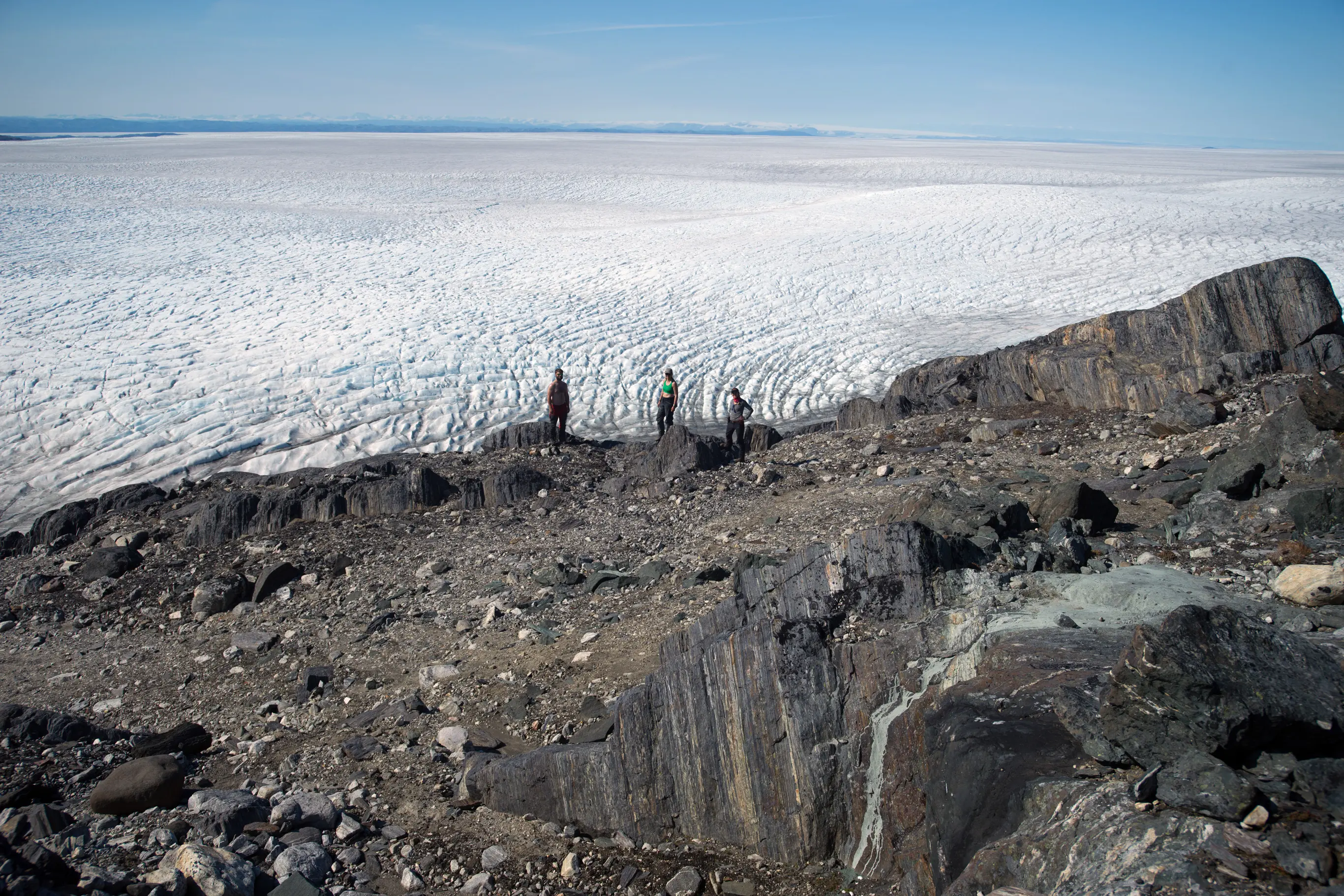As scientists, we’ve long been fascinated by Earth’s magnetic field and its role in making our planet habitable. It acts as a protective shield, deflecting harmful radiation from the sun and cosmic rays, allowing life to flourish. While we knew the field existed for at least 3.5 billion years, our recent research pushes that timeline back even further.
 Claire Nichols and colleagues stand on the outcrop of a banded iron formation containing the oldest records of Earth’s magnetic field. The Greenland ice sheet is in the background. Credit: Claire Nichols
Claire Nichols and colleagues stand on the outcrop of a banded iron formation containing the oldest records of Earth’s magnetic field. The Greenland ice sheet is in the background. Credit: Claire Nichols
The team, comprised of geologists from MIT and Oxford University, embarked on an expedition to Greenland, home to some of the oldest rocks on Earth. Specifically, we ventured into the Isua Supracrustal Belt, a region known for its exceptionally well-preserved rock formations. These rocks, dating back 3.7 billion years, hold within them the secrets of Earth’s early magnetic field.
Analyzing these ancient rocks is no simple task. Over millions of years, rocks can undergo various transformations due to heat and pressure, potentially altering or erasing the magnetic signatures they hold. To ensure we were studying rocks that retained their original properties, we carefully selected samples of banded iron formations. These unique rocks, formed in primordial oceans before the rise of atmospheric oxygen, contain iron-oxide minerals that act like tiny magnets, aligning themselves with the Earth’s magnetic field as they form.
Back in the lab, the team meticulously analyzed these samples, employing techniques to demagnetize and remagnetize the rocks in controlled steps. By comparing the rock’s response to the known laboratory field, they were able to determine the strength of the ancient magnetic field imprinted within them.
The results were astounding. The 3.7-billion-year-old rocks revealed a magnetic field at least half as strong as the one we experience today. This discovery suggests that Earth’s magnetic field has been a constant and powerful presence throughout much of the planet’s history, potentially playing a crucial role in the emergence and evolution of life.
This finding also raises intriguing questions about the source of this early magnetic field. Today, the field is generated by the movement of molten iron in Earth’s core. However, 3.7 billion years ago, the Earth’s core was likely still forming, suggesting a different mechanism was at play. Understanding this ancient power source could provide valuable insights into the formation and evolution of terrestrial planets, both within our solar system and beyond.
This work highlights the dynamic history of our planet and the intricate forces that have shaped it into the life-sustaining world we know today. As we delve deeper into Earth’s past, we uncover more pieces of the puzzle, leading us closer to understanding the origins of life and the potential for habitable worlds throughout the cosmos.
The link to the original open-access research article is here.
The images are courtesy of Claire Nichols.
The original research story can be read at MIT Research News.













Responses (0 )